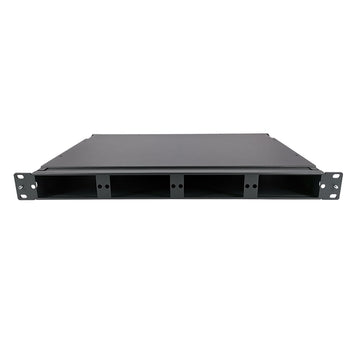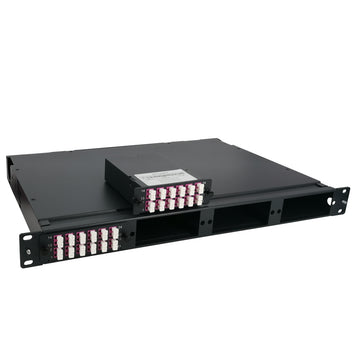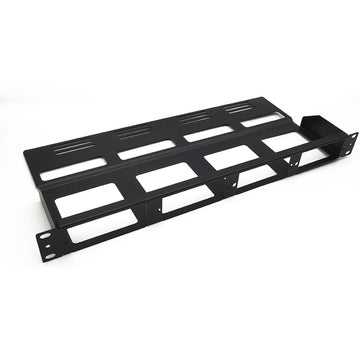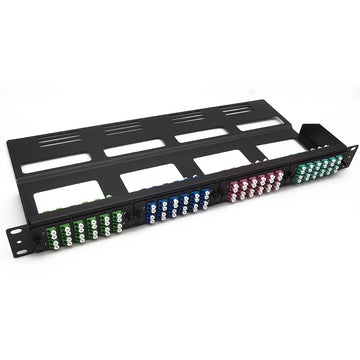Will Different Ethernet Cable Speed Affect My Network?
Ethernet cables are the default physical connection for today’s home or business networks. At a glance, Ethernet cables appears to be little more than bulky phone cords. They are vastly different, however, and the type of Ethernet cable you use can have an impact on your internet connection and speeds. Ethernet cables come in different categories, each identified as “Cat” followed by a number. People always want to buy a high speed Ethernet cable to enjoy a high speed network transmission. However, will different Ethernet cable speed actually affect your networks? Here, we’ll discuss the speeds of the most popular Ethernet cables categories (Cat5, Cat5e, Cat6, Cat6a, Cat7 and the newest Cat8), to help you make a wise choice.

Ethernet Cable Speed of Different Categories
The following is the overview of Ethernet cable speed of Cat5, Cat5e, Cat6, Cat6a, Cat7 and Cat8.
Cat5 Ethernet Cable Speed: 10/100Mbps for 100m
Since its inception in the 1990s, CAT5 has become one of the most popular types of of all twisted pair cable types which include CAT3, CAT4, CAT5, CAT6, etc. Cat5 Ethernet cable is the oldest type of these cables. It can support either 10Mbps or 100Mbps speed with a bandwidth of up to 100MHz, which was the first Fast Ethernet-capable to be introduced. Although CAT5 is superseded by CAT5e in many applications, most CAT5 cable meets Cat5e standards and it’s still a commonplace in Local Area Networks (LANs). Many copper networks choose CAT5 as their transmission media because of its low price and high performance. However, with technology develops, this old-fashioned cable is no longer a recognized standard, that it’s hard to find it in today’s stores.
CAT5 Cable Technology Works
CAT5 is widely used in 100BASE-TX and 1000BASE-T Ethernet networks. CAT5 typically contains four pairs of copper wire. In 100BASE-TX standard, the signals are transmitted across only two of the CAT5 pairs. One pair is used to transmit signals, and the second pair receives the signals, leaving the other two unused in signal transmission. What’s more, the 100BASE-TX signals only run in one direction across the pairs. As technology advanced, the 1000BASE-T Gigabit Ethernet (GbE) standard was developed. 1000BASE-T standard utilizes all four copper pairs to transmit up to 250 megabits of data per second (Mbps) in full duplex transmission across each pair. That is to say, each pair is able to transmit and receive signals simultaneously. 1000BASE-T modules (eg. GLC-T) functioning over CAT 5 with RJ-45 connector achieve full duplex transmission with link length up to 100m (328ft).
Cat5e Ethernet Cable Speed: 1000Mbps for 100m
Cat5e is an enhanced version of Cat5 cable. This Ethernet cable speed is up to 1000Mbps or “Gigabit” speed. In theory, it could be ten times faster than Cat5. Besides, it decreases crosstalk that happens between two wires inside a cable. Cat5e Ethernet cable is the most widely used category on the market. When in doubt about either choosing a Cat5 or Cat5e cable, we can advise you to go for the Cat5e cable. The reason for this is that Cat5e cables are also "backwards compatible". This means that you can always upgrade a network that is wired with Cat5 with Cat5e. All systems that work with a Cat5 cable therefore also work with a Cat5e cable.
Cat6 Ethernet Cable Speed: 1000Mbps for 100m and 10Gbps for 55m
Cat6 is certified to handle Gigabit speed with a bandwidth of up 250MHz. And it can be capable of 10Gbps speed under ideal circumstances. Cat6 Ethernet cable has some improvements like the better insulation and thinner wires, providing a higher signal-to-noise ratio. Thus, it’s quite suited for environments with higher electromagnetic interference. Note that, Cat6 Ethernet cable is provided with two forms, shielded twisted pair (STP) and unshielded twisted pair (UTP).
Cat6a Ethernet Cable Speed: 10Gbps for 100m
Cat6a Ethernet cable allows 10Gbps data transmission rate with the bandwidth of up to 500MHz. Its transmission can achieve to 100 metres, which is longer than the 37-55 metres of Cat6 cable. Cat6a is usually available in STP form. This cable is ideal for industrial situation, but lack flexibility that is often needed for a residential deployment. There are various kinds of Cat6a cables in the market such as round shielded and flat shielded. And many factors may affect the performances of Cat6a in network systems. Here are the important considerations to weigh when choosing a Cat6a cable.
UTP or F/UTP?
There are two types of Cat 6A cable: unshielded (UTP) and shielded (F/UTP). UTP cable is the common unshielded cable. While the F/UTP means the cable consists of 4 unshielded twisted pairs. However, it contains an outer foil shield. Due to the use of fillers as a barrier against alien crosstalk, UTP cables tend to be larger in diameter than shielded cables, which means they need more investments to support the extra conduit and hanging devices. Generally, Cat 6A seems to be a better choice for 10G networks. But they are vulnerable to installation abuse as the position of the pairs inside the cable may be changed, affecting the proximity of the pairs and their position relative to the overall foil shield, thus changing the transmission properties of the pairs. So it’s important to choose the suitable one based on your practical applications.
Cable Size and Weight
Due to the higher operating frequencies of Cat 6A, Cat 6A cables are larger than Cat 6 cables. Large size means fewer cables can fit into a cable tray or conduit, which is a problem that must be considered when selecting Cat 6A cables.
Installation Complexity
As we all know, because the Cat 6A cables have more twists in copper pairs and thicker outer jacket, most of them are larger than common cables. Therefore, more time is needed to install and terminate those cables. Making a proper plan to do Cat 6A cabling is necessary according to the project process.
Channel Length
When delivering PoE, some small-diameter Cat 6A cables may not support the full 100m distance per-channel. However, there is no doubt that Cat 6A cable can support full 100m distance in other data transmission. A cable that can handle the full 100 meters not only provides an extra margin of performance, but supports a wider range of data center configurations including top-of-rack, end-of-row and middle-of-row configurations. So you can decide whether to deploy Cat 6A cables according to your requirements.
Bend Radius
A cable that has larger cable diameters also comes a larger bend radius, which is important when routing cables in tight spaces such as inside wall cavities. The bend radius also has an impact on the ability to route cables for maximum airflow within racks. The smaller the bend radius, the easier the cable is to route and install.
Cat7 Ethernet Cable Speed: 10Gbps for 100m
Ethernet cable speed of Cat7 can reach to 10Gbps with a bandwidth of up to 600MHz. It consists of a screened, shield twisted pair of wires, which completely eliminates alien crosstalk. It’s more suited to data centres than home use. The Cat 7 cable provides more enhanced performance against crosstalk and attenuation than its previous peers by requiring that each pair be completely shielded and form a screen-shielded twisted pair (SSTP) or screen-foiled twisted pair (SFTP) based cabling. It is used in Gb Ethernet and 10 Gb Ethernet networks.
Cat 7 cable is commonly terminated using a GG45 connector, which is a connector that it backwards compatible with the 8p8c RJ45 connectors used on Cat6 or Cat5e cable. The GG45 connector has four additional conductors that provide support for frequencies of up to 600MHz, and up to 1000MHz using Cat7a. The higher frequencies allow Cat 7 cable to support 10-Gigabit Ethernet. Cat7 cable may also be terminated using TERA connectors, which were developed by Siemon. The TERA connector has a unique footprint and is not compatible with a standard 8p8c (RJ45) connector. The TERA connector is also capable of supporting frequencies of up to 600MHz using Cat7a cable. The ability to support the higher frequencies allows Cat7 and Cat7a cable to carry more data. This allows Cat7 and Cat7a cable to support Ethernet applications up to 10-Gigabit Ethernet.
Cat8 Ethernet Cable Speed: 40Gbps for 20m
Cat8 is capable of supporting bandwidth of up to 2000MHz. This Ethernet cable speed can be up to 25/40Gbps. It’s the fastest Ethernet cable, which is not intended for office environments, but suitable for connecting equipment in data centres such as connecting server to switch.
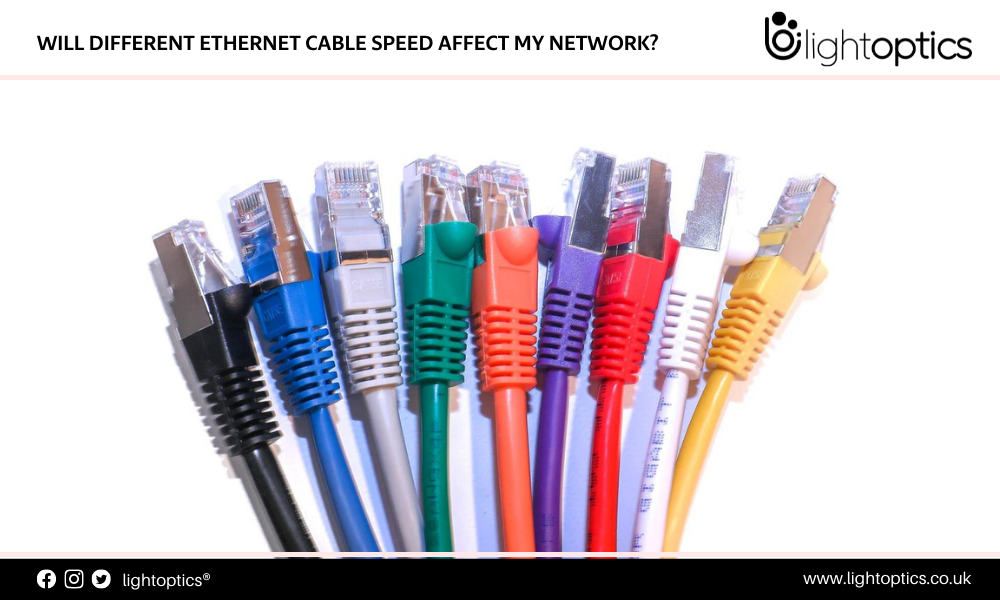
Technical and Physical Differences
The typical technical differences are clear to see. As the category number increases, so does the Ethernet cable speed and bandwidth. This is not a coincidence, because each category brings more rigorous testing to eliminate crosstalk and add isolation between the wires. Thus, Cat8 supports the highest transmission speed.
As for the physical differences, Ethernet cables use different construction and isolation to eliminate interference and allow for faster speeds. Take the cables from FS.COM as an example. Its Cat6a, Cat7 and Cat8 use screen shield and aluminum foil shielding for reducing crosstalk, while Cat5e and Cat6 don’t. So Cat6a, Cat7 and Cat8 have better performance.
